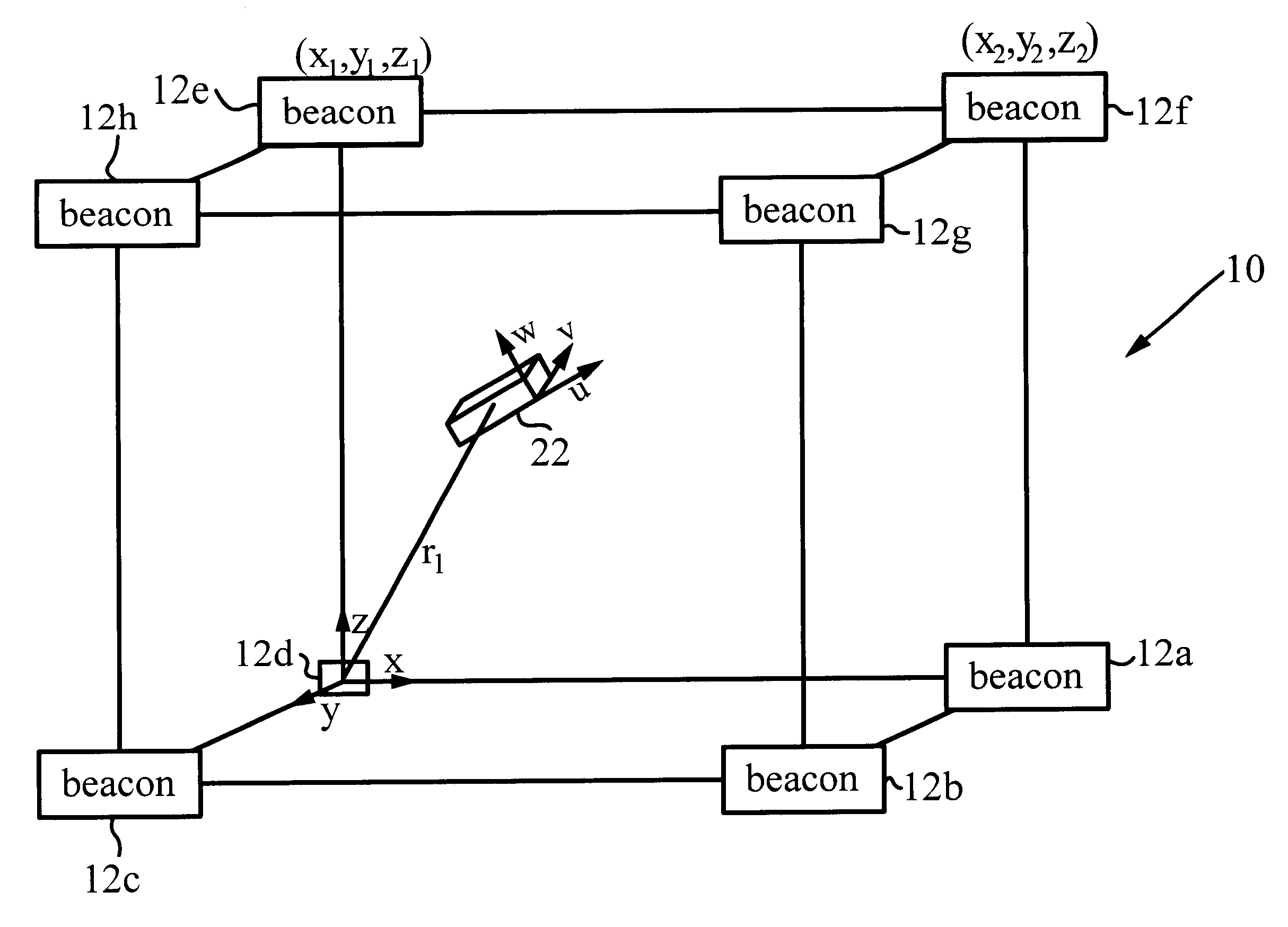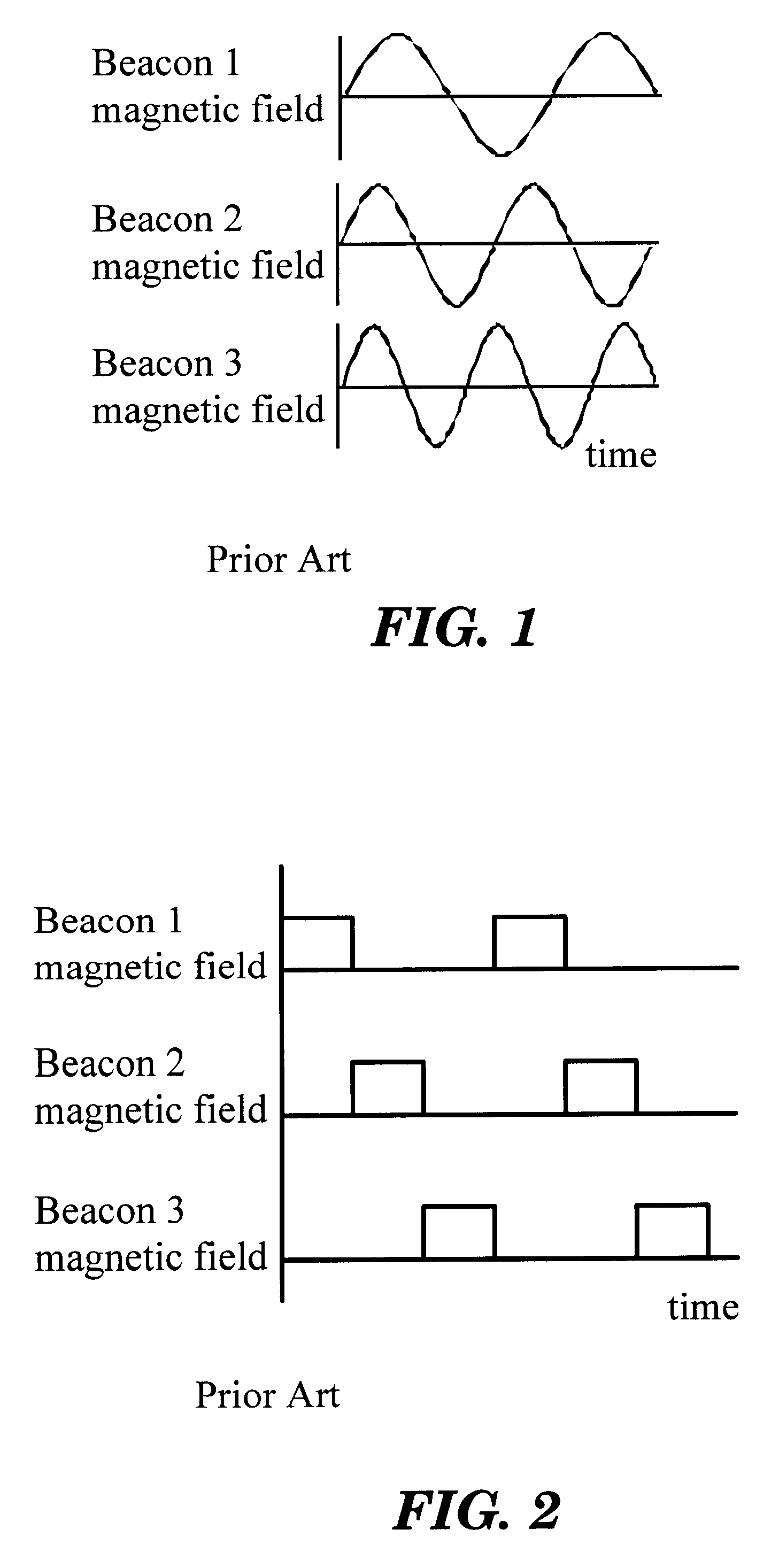Distributed magnetic field positioning system using code division multiple access
a technology of code division and multiple access, applied in the field of magnetic field positioning systems, can solve the problems of distortion of magnetic field system error source, inability to accurately measure the and inability to achieve uniform eddy current noise over the coverage area
- Summary
- Abstract
- Description
- Claims
- Application Information
AI Technical Summary
Problems solved by technology
Method used
Image
Examples
first embodiment
In present invention, an apparatus and methods are provided for a magnetic field positioning system using a fundamentally different, and advantageous, signal structure and multiple access method, known as Code Division Multiple Access (CDMA).
The system is used to estimate the position and orientation of a magnetic sensor in a reference coordinate frame. As used here, the term state refers to both position at a particular point in space in the reference coordinate frame, and attitude (orientation) of the sensor. Thus the sensor has a state vector with six components, three for position and three for attitude. Attitude can be described by many equivalent systems, including, but not limited to, Euler angles between the sensor coordinate system and the building-fixed coordinate frame; pitch, yaw, and roll angles; or direction cosine matrices.
A position measurement system 10 of the present invention is shown in FIG. 5. Magnetic fields are generated by eight beacons 12a-12h positioned at ...
second embodiment
A magnetic field positioning system with a large coverage area (e.g., building wide) is formed by distributing many beacons at numerous different locations throughout an area. A challenge, however, is the processing method to estimate position and attitude given magnetic field strengths from beacons in multiple locations. The equations used to solve for position and attitude are nonlinear, and do not converge to a solution using standard techniques unless a good estimate of position and attitude is already known. In a second embodiment, the present invention provides an apparatus and method to solve for position and attitude, with no prior knowledge, using dipole magnetic fields produced by beacons at multiple locations.
The apparatus to form a magnetic field positioning system with a large coverage area consists of a plurality of beacons distributed at different, known locations throughout an area. The locations are referred to as significantly different from one another, meaning th...
PUM
 Login to View More
Login to View More Abstract
Description
Claims
Application Information
 Login to View More
Login to View More - R&D
- Intellectual Property
- Life Sciences
- Materials
- Tech Scout
- Unparalleled Data Quality
- Higher Quality Content
- 60% Fewer Hallucinations
Browse by: Latest US Patents, China's latest patents, Technical Efficacy Thesaurus, Application Domain, Technology Topic, Popular Technical Reports.
© 2025 PatSnap. All rights reserved.Legal|Privacy policy|Modern Slavery Act Transparency Statement|Sitemap|About US| Contact US: help@patsnap.com



